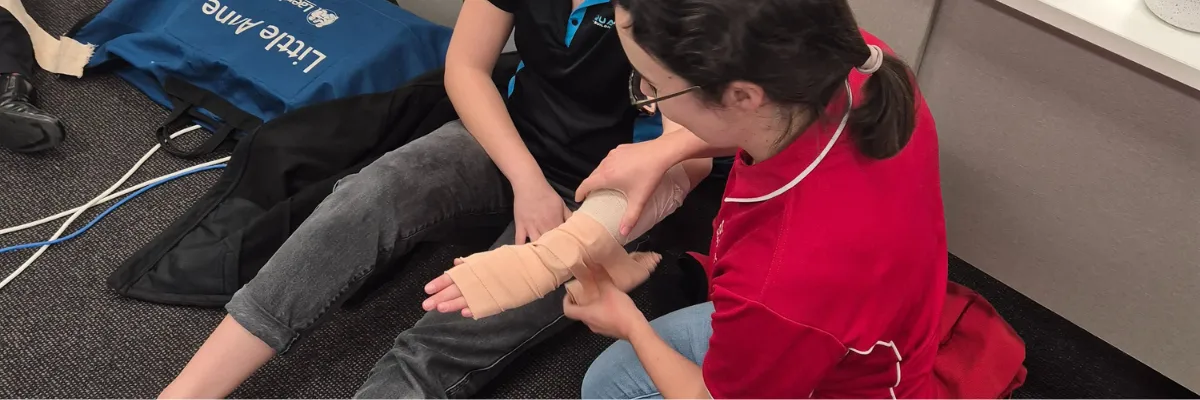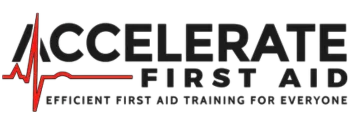
Advanced Resuscitation Equipment Essentials: The Complete Professional Guide
When seconds count during a cardiac emergency, having the right advanced resuscitation equipment isn't just about ticking boxes—it's literally the difference between life and death. Yet many emergency response professionals struggle to keep up with the constantly evolving landscape of resuscitation technology and equipment standards.
Whether you're managing a team of lifeguards, updating your facility's emergency response capabilities, or pursuing HLTAID015 certification, understanding modern resuscitation equipment is non-negotiable. From automated external defibrillators to oxygen therapy systems, today's emergency toolkit has evolved significantly.
This guide breaks down essential advanced resuscitation equipment every professional should know. You'll discover what equipment is needed for various scenarios, how to select quality devices, maintenance best practices, and the latest innovations. By the end, you'll have a clear roadmap for building or upgrading your equipment inventory to meet current Australian standards.
What Equipment Is Needed for Advanced Resuscitation?
Advanced resuscitation equipment goes way beyond basic CPR to provide comprehensive life support during cardiac and respiratory emergencies. Here's what you actually need on hand:
Core Equipment:
These tools work together to provide advanced cardiac life support (ACLS) capabilities in emergency situations. Each piece has a specific job, and knowing how they fit together can make the difference when every second counts.
Understanding Advanced Resuscitation Equipment Categories
Life Support vs. Basic First Aid Equipment
Advanced resuscitation equipment differs fundamentally from basic first aid supplies. Basic equipment handles minor injuries—bandages, ice packs, simple CPR barriers. Advanced equipment steps in when life's on the line—gear that can restart hearts, force air into lungs, and monitor interventions.
In Australia, using advanced equipment properly requires specific training and certification. The Australian Resuscitation Council sets clear guidelines about what facilities need based on risk profile. HLTAID015 certification provides hands-on training with all this equipment.
Equipment Classification Systems
Emergency response equipment falls into three tiers:
Basic tier - covers immediate response—CPR barriers, basic airways, manual suction devices.
Intermediate tier - includes AEDs, oxygen delivery systems, basic monitoring equipment. Most aquatic facilities and public venues operate here.
Advanced tier - encompasses professional-grade equipment—manual defibrillators, advanced airways, comprehensive monitoring. Typically found in ambulances and hospitals.

Essential Defibrillation Equipment
Automated External Defibrillators (AEDs)
AEDs analyze heart rhythm and deliver controlled shocks to restore normal beating. They walk you through the process with voice prompts—no medical degree required.
The technology detects abnormal rhythms like ventricular fibrillation and delivers electrical shocks that "reset" the heart. Public access models have simplified controls for anyone to use. Professional-grade models offer more data and advanced features.
Key features include pediatric capability, biphasic waveform technology, clear audio prompts, and rugged construction for outdoor/aquatic settings. Place AEDs so no point is more than 90 seconds away at a brisk walk.
AED Maintenance and Compliance
Daily visual inspections take 30 seconds—check the status light is green and there's no damage. Weekly checks involve confirming pads are within expiration and batteries are good. Monthly reviews mean testing device function and checking documentation.
Electrode pads expire every 2-3 years. Batteries last 3-5 years. Track these dates religiously—expired components make your AED useless during emergencies.
Australian regulations require records of all checks, activations, and maintenance. Auditors want to see this documentation.
Oxygen Therapy Systems and Equipment
Oxygen Delivery Devices
Oxygen cylinders come in different sizes. D-size (425L) is portable but runs out fast. E-size (680L) balances capacity with portability. M-size (3,450L) stays fixed but provides hours of supply.
Regulators control oxygen flow. Continuous flow delivers steady streams, demand valves trigger on inhalation. Flow meters adjust delivery from 1-15 liters per minute.
Delivery options include non-rebreather masks (60-95% concentration for emergencies), simple face masks (35-60% for moderate needs), and nasal cannulas (24-44% for conscious patients).
Oxygen Safety and Storage
Oxygen accelerates combustion—creating serious safety requirements. Secure cylinders to prevent falls. Store in well-ventilated areas, 3+ meters from flammables, with clear labeling.
Check cylinder pressure before each shift. Inspect valves, regulators, and hoses for damage. Cylinders need hydrostatic testing every 5-10 years.
Advanced Administration Techniques
Flow rates vary by need. Conscious patients with mild distress: 2-4 L/min via cannula. Severe distress: 10-15 L/min through non-rebreather mask. CPR with BVM: 10-15 L/min.
Pediatric administration requires different equipment sizes and lower flow rates. Connecting oxygen to BVM reservoirs boosts delivery from 21% (room air) to 90%+.
Training requirements fall under HLTAID015 certification—covering setup, flow rates, mask placement, and safety protocols.
Airway Management Tools
Bag Valve Masks (BVM)
BVMs manually ventilate patients who can't breathe effectively. Adult bags hold 1,600ml, pediatric 500-700ml, infant 250ml. Using wrong sizes risks lung damage.
Self-inflating bags (most common) refill automatically and work with or without oxygen. Flow-inflating bags require oxygen but offer better pressure control.
Proper seal technique is critical—maintain airtight seal while keeping airway open. Two-person operation works better for extended resuscitations.
Airway Adjuncts
Oropharyngeal airways (OPAs) - prevent tongue from blocking airway. Size from mouth corner to earlobe. Only use on unconscious patients—triggers gagging otherwise.
Nasopharyngeal airways (NPAs) - work when patients have gag reflex or jaw injuries. Size from nostril to earlobe. Lubricate before insertion. Never use with suspected skull fractures.
Suction Equipment
Manual suction units work anywhere without power—perfect for backup. Powered units provide stronger suction for thick secretions but need batteries.
Yankauer tips clear mouth and throat without tissue damage. Flexible catheters reach deeper but require more skill. Portable units need 30+ minute battery life.
Monitoring and Assessment Equipment
Pulse Oximeters
Pulse oximeters measure blood oxygen saturation. Normal readings: 95-100%. Below 90% signals trouble.
Accuracy factors include nail polish, poor circulation, movement, and ambient light. Understand these limitations instead of blindly trusting readings.
Finger sensors work for most situations. Ear sensors help with poor hand circulation. Forehead sensors handle movement better.
Blood Pressure Monitors
Manual cuffs are more accurate but require skill. Automatic monitors provide digital readouts and work in noisy environments.
Proper cuff sizing directly affects accuracy. Cuff bladder should encircle 80% of arm. Position arm at heart level and take multiple readings.
Systolic below 90mmHg suggests shock. Above 180mmHg during potential stroke changes treatment.
Automated CPR Feedback Devices
Feedback devices provide real-time compression guidance. Even experienced rescuers compress too shallow or slow without feedback.
Devices monitor depth (minimum 5cm for adults), rate (100-120/minute), and full chest recoil. Metronomes maintain pace as rescuers tire.
Data recording enables post-emergency review for quality improvement. Studies show 30-40% compression depth improvement with feedback.
CPR Equipment and Accessories
CPR Manikins and Training Equipment
Practice builds proper CPR technique. Adult manikins teach two-handed compressions. Child manikins require less force. Infant manikins teach two-finger technique.
Feedback-enabled models provide immediate correction—showing when compressions are too shallow, fast, or don't allow recoil. Professional-grade manikins handle thousands of compression cycles without breaking down.
Protective Barriers and PPE
CPR face shields prevent disease transmission during rescue breathing. Pocket masks ($15-40 AUD) work better for extended resuscitation and include oxygen ports.
Nitrile gloves protect against bodily fluids. Face shields prevent splashes. Post-COVID standards emphasize treating every patient as potentially infectious.

Emerging Technologies in Resuscitation
Smart AEDs and Connected Devices
IoT-enabled AEDs connect to Wi-Fi/cellular and automatically report status. Get phone alerts when batteries are low or pads expire. Automatic incident reporting records shock delivery times and CPR quality.
Cloud-based maintenance tracking consolidates all equipment data. Generating compliance reports becomes button clicks instead of hours searching paper records.
AI and Future Trends
AI-powered CPR guidance analyzes technique in real-time, providing specific corrections. Predictive maintenance identifies problems before failures occur.
Wearable technology monitors patients and alerts nearby responders. Drone-delivered AEDs arrive 3-4 minutes faster than traditional response. VR training creates immersive emergency situations for better skill transfer.
DIGITAL TRANSFORMATION SUCCESS
Three aquatic locations implemented cloud-based management:
Maintenance compliance: 73% → 100%
Audit prep time: 8 hours → 45 minutes
Early issue identification increased 3x
Conclusion
Advanced resuscitation equipment represents more than compliance—it's genuine investment in life-saving capability. From AEDs and oxygen systems to airway tools and monitoring devices, each piece serves a specific role.
For lifeguards, first responders, and safety managers across Gold Coast, staying current with equipment standards is about confidence. When critical moments arrive, having the right equipment, properly maintained and ready, makes the difference between successful outcomes and tragedy.
Equipment alone won't save anyone. HLTAID015 certification provides hands-on training to use equipment effectively under pressure. Regular maintenance, ongoing training, and preparedness culture ensure teams are truly ready when seconds count.
Whether building new inventory, upgrading aging equipment, or ensuring Australian compliance, this guide provides the foundation for informed decisions. Investment in quality advanced resuscitation equipment and proper training pays back in lives saved and emergencies handled with confidence.
Transform Your Equipment Knowledge Into Life-Saving Skills
You've learned about essential advanced resuscitation equipment—now get hands-on training with experienced professionals.
✓ HLTAID015 Nationally Recognized Certification
✓ Modern Equipment Training Facility
✓ Flexible Gold Coast Schedules (Weekend & Weekday)
✓ Small Class Sizes for Maximum Practice Time
✓ Experienced Emergency Services Instructors
Or call us: 0434778243 | 04FIRSTAID


